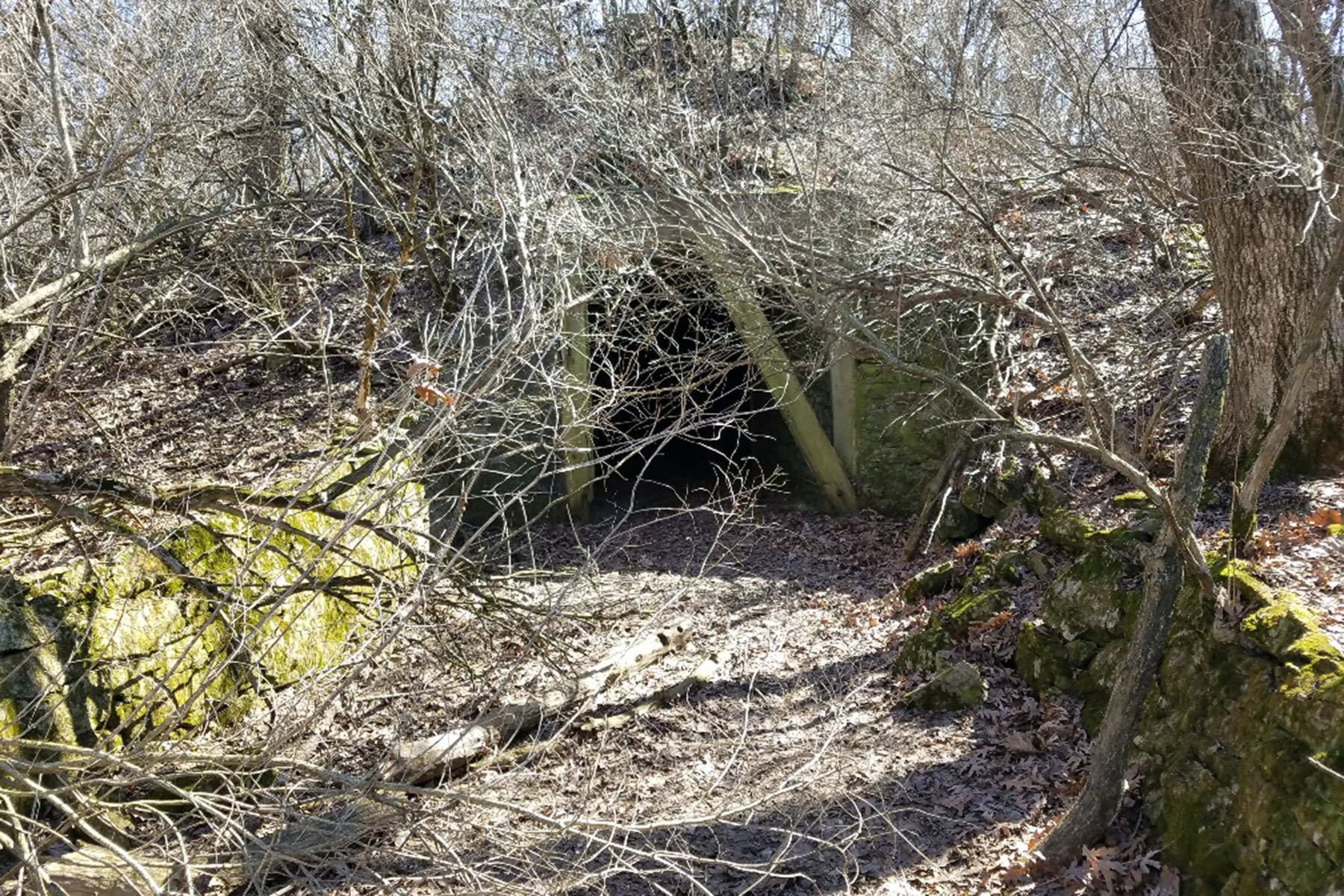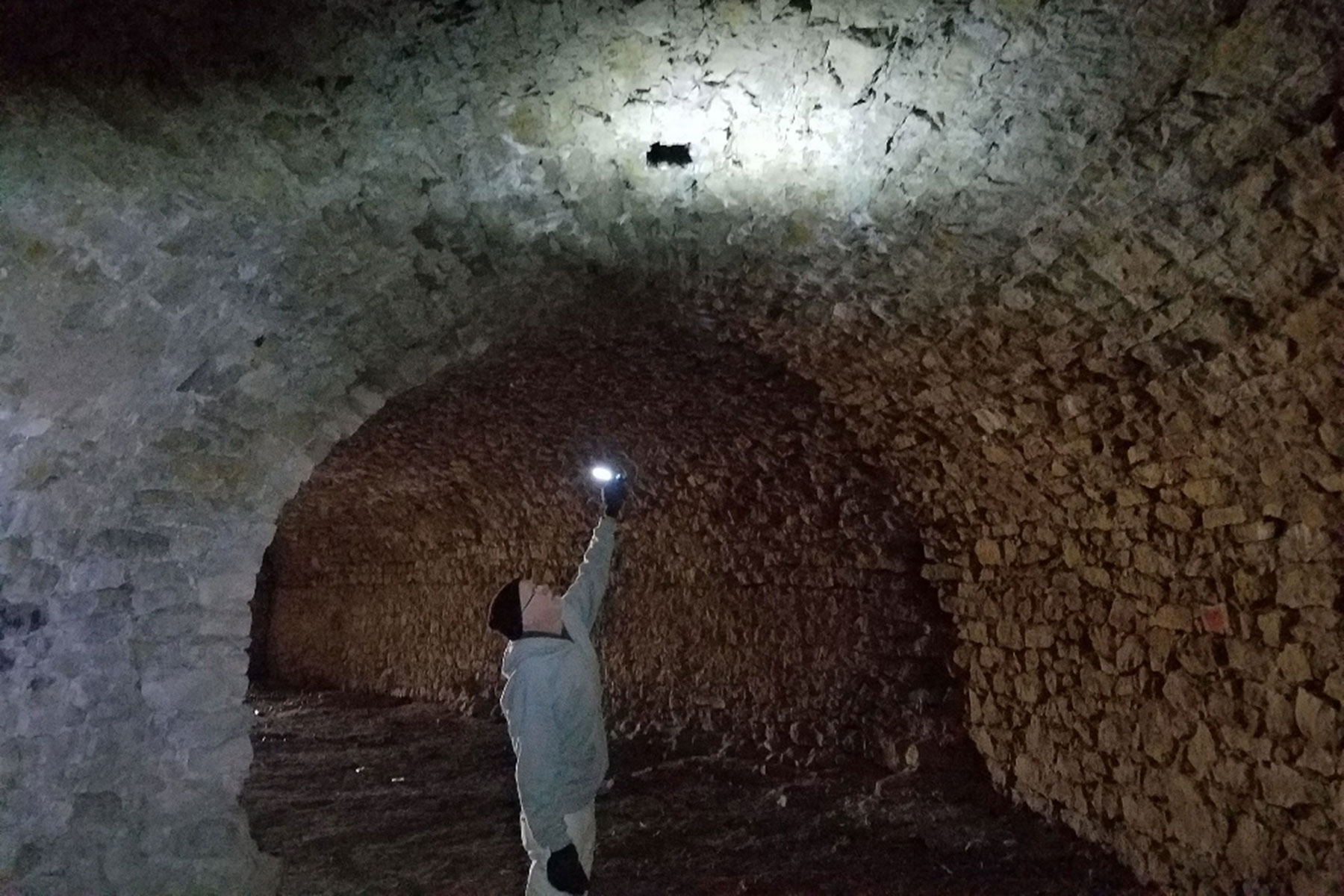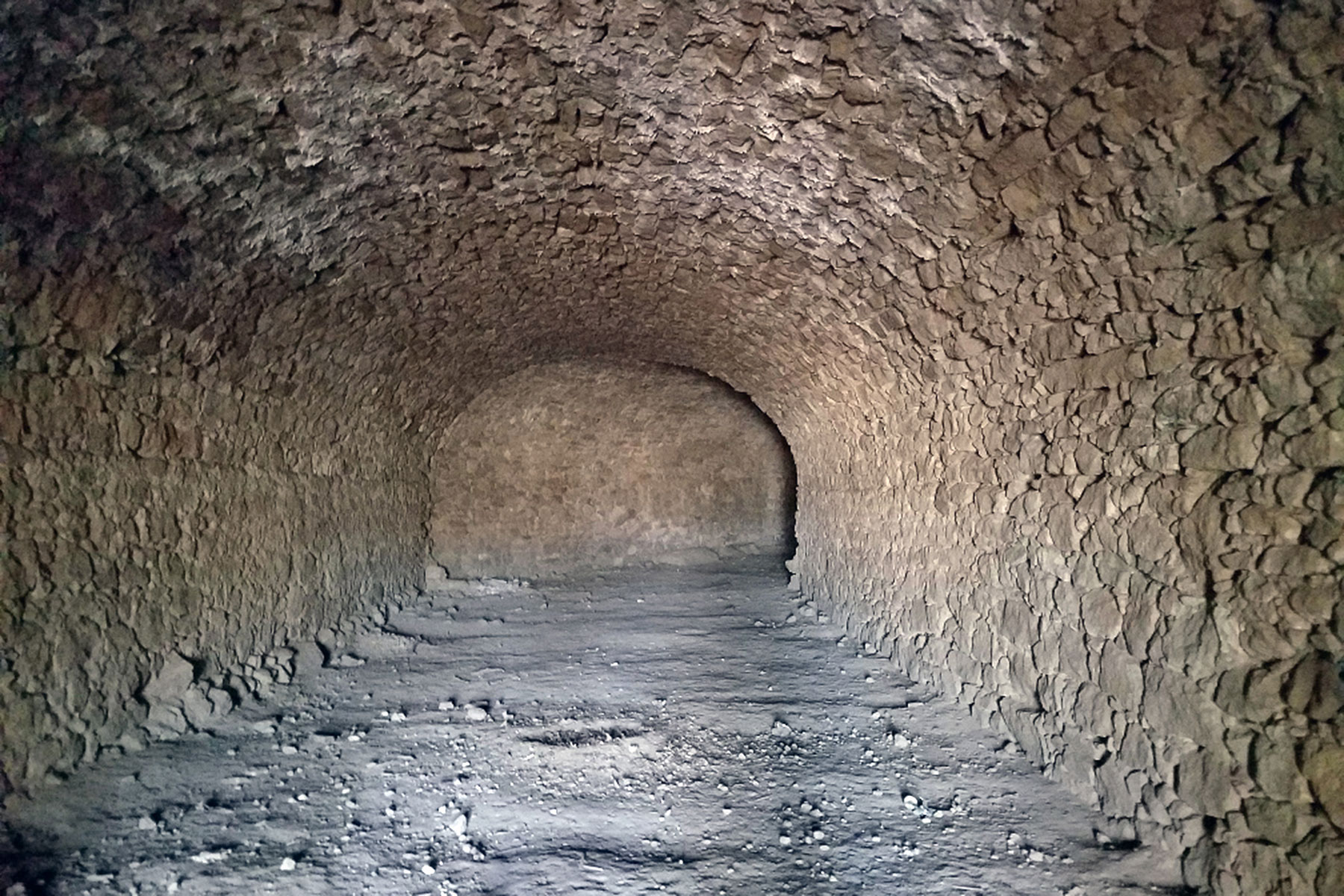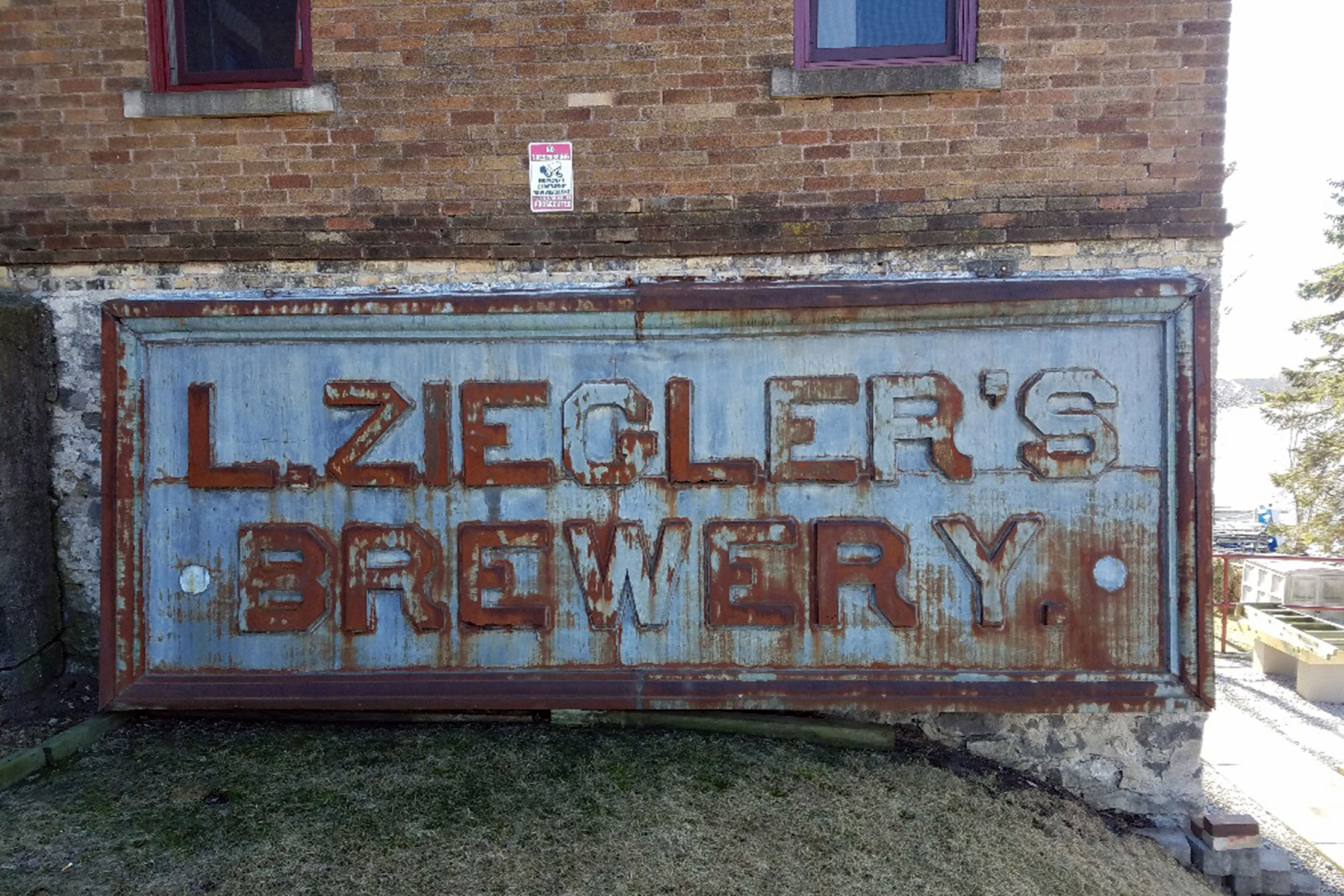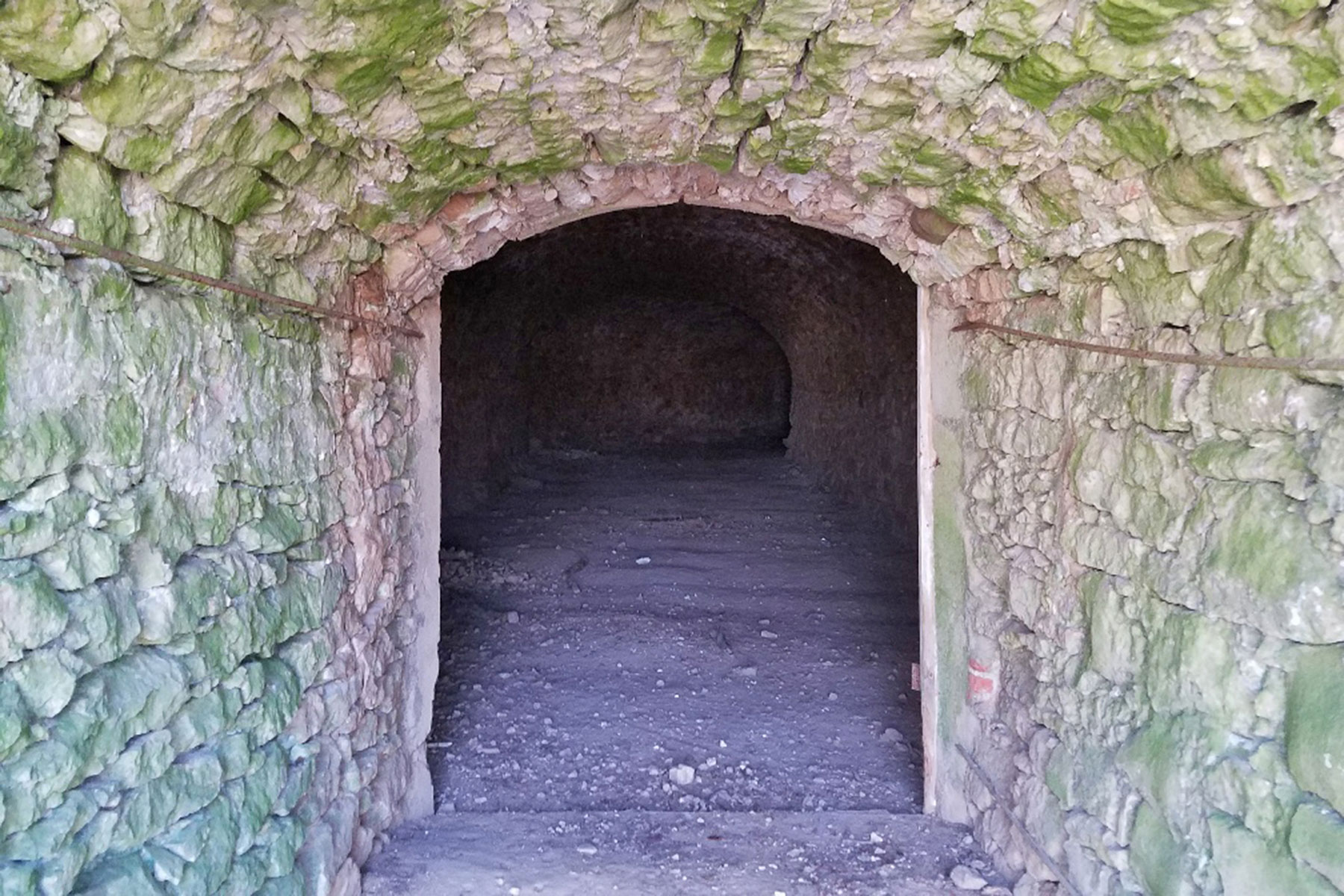
Beaver Dam, Wisconsin is located in the south central part of the state in Dodge County, and was once home to seven breweries. Unfortunately, four of them lasted less than a year. Of the other three, one lasted sixteen years, another operated for sixty-three years and then closed at prohibition. The third survived and closed in 1953 having operated for one hundred years. The three had a variety of owners and names during the years of operation. It is believed that individuals involved with the Beaver Dam brewing industry had originally served apprenticeships with larger brewers in Milwaukee.
Milwaukee historian Bob Giese had an opportunity to visit Beaver Dam recently and wrote the following report of his adventure and discovery.
While attending some business in Beaver Dam on a bitterly cold day recently, I had the opportunity to visit a couple of brewery caves. A friend made arrangements for the visit. One of the caves was the well-known Louis Ziegler Brewery. Unfortunately there was not much to see. Most of the cave had partially collapsed years ago. Yet there was a sixteen foot by thirty-two foot section still intact. The logistics to enter was not an easy task and definitely not safe. The cave is closed for safety reasons and if not properly ventilated may eventually fully collapse.
However, the day was not a total loss. The Thomas Young cave was totally unexpected. We went to the middle of a farmer’s field, with a portion covered by woods. Battling cold winds, we walked across the field and approached the site. After fighting our way through bushes and trees what I saw was like finding King Solomon’s mines, but without the gold.
In my eyes it was a beautiful cave with a ten foot by fifteen foot long entrance, which led us into a cave that was approximately seventeen feet wide and 110 feet long, with a dog leg to the right. From information acquired we learned that there were three caves built in the 1840s. Two have been torn down, with this being the last remaining.
Considering the age of the cave, it was amazing that it was in such good condition. What may have contributed to the preservation were six vent holes in the ceiling, up through the top of the hill, which allowed moisture to escape.
There is not much information on the history of the caves. Referring to the Beaver Dam Centennial Anniversary Book it is believed that the caves were called the Young Ale cellars. As the book states there were three deep cellars built into the hillside. The walls and vaulted ceilings were of limestone construction. The book also notes that the caves were large enough that a team of horses with wagon could turn around.
The centennial book’s evidence seems to indicate that a Thomas Young, who came here from England sometime in the early 1840s, built these cellars and used them as a brewery for the manufacture of his native beverage. Since there is no evidence that a brewery building ever existed in connection with the enterprise, there may be some justification in advancing the belief that these cellars were separately used as a Malthouse, brew house, and storage for aging ale.
Considering the reported size of Thomas Young’s brewery, it is remarkable that so little is recorded of it. The industrial and population documentation lists a 1860 census report that he sold 1,000 barrels of beer during the census year, and employed four brewery laborers who boarded with his family. The fact that Young and three of his employees were from England suggests that at least part of his output was English-style ales. It is also possible this business also became the Steil Brewery, with Niehoff owning it during the transition.
It is believed part of this ale was sold to the innkeeper named Pratt in Oak Grove. There can be little doubt that the beverage was also obtainable at other saloons.
Young also operated a limekiln. It is not likely that the kiln was in operation past the 1850s. How big was Young’s operation and how long it lasted may forever be a mystery. We do know Young began brewing fermented ales in limited quantities a few years before Michael Biersach started the first Beaver Dam lager brewery in 1853. The last year beer was produced in Beaver Dam was 1953, by the Louis Ziegler Brewery ending 100 years of beer history.
What we do know is that the first brewery still has one of its cellars intact. I hope Beaver dam puts some serious thought in trying to keep this historic landmark.
Bob Giese
An earlier version of this article was published in by Museum of Beer & Brewing as Caves of Beaver Dam

